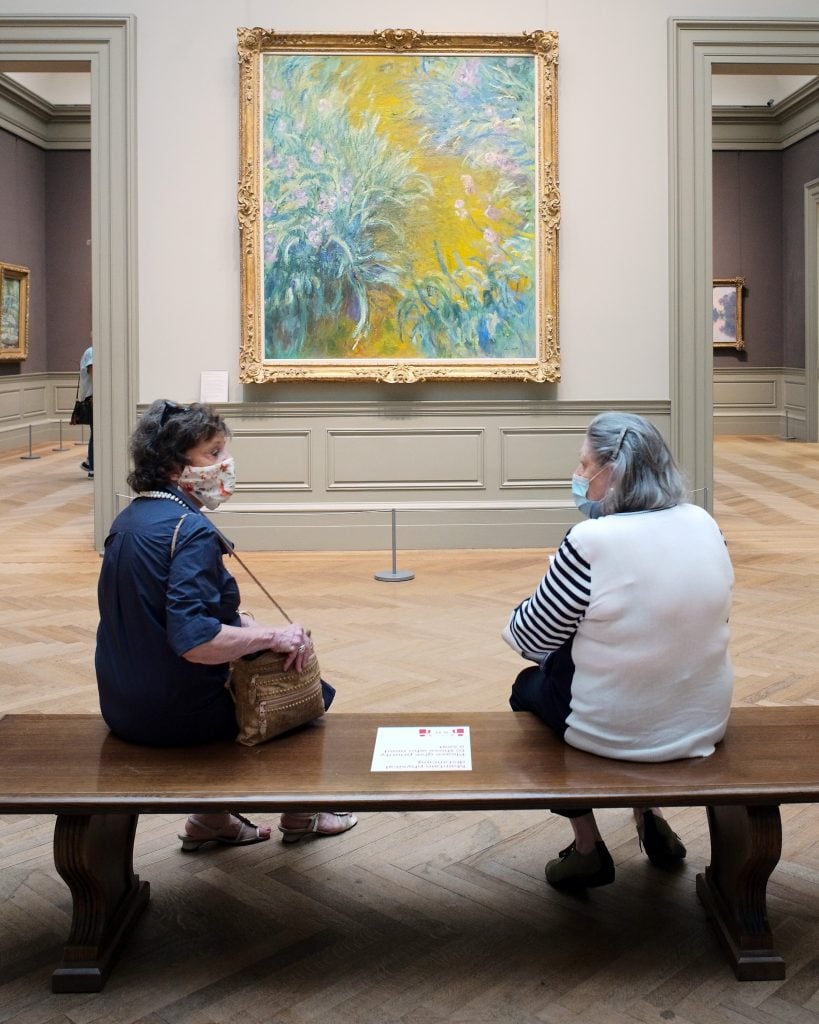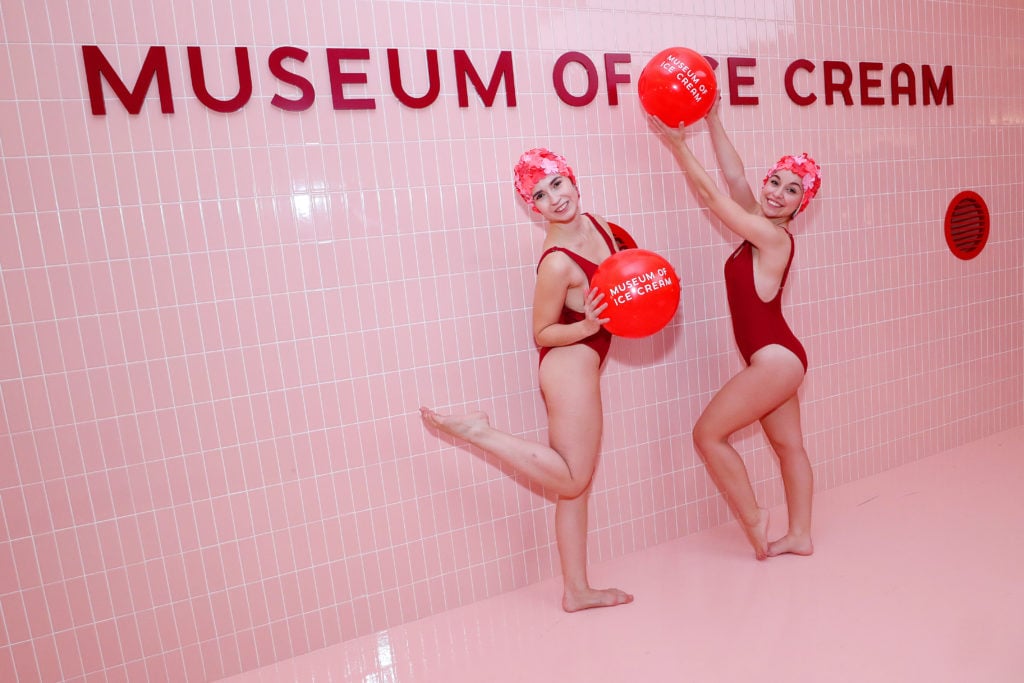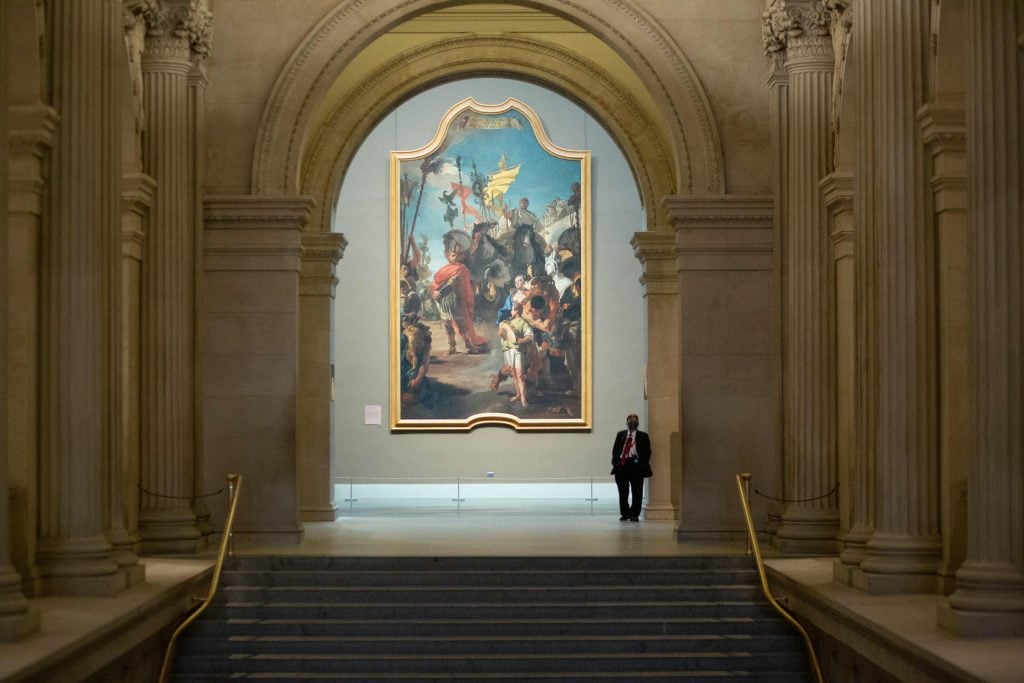Every Monday morning, Artnet News brings you The Gray Market. The column decodes important stories from the previous week—and offers unparalleled insight into the inner workings of the art industry in the process.
This week, surveying a void in the museum sector…
THE INCREDIBLE SHRINKING AUDIENCE
On Monday, Nina Siegal of the New York Times reported on a “fairly consistent story” unfolding across Europe’s art institutions: “Museums that have reopened have about a third of the visitors they had this time last year.” This distressing decline haunts even perennial culture-crowd magnets like the Louvre, the Rijksmuseum, and the 18 State Museums of Berlin. Perusing the details lays bare a grim chain reaction that raises existential questions about museums’ target audiences in 2020 and beyond.
To me, the most crucial takeaway of the European visitorship drought is that it has little to do with the reduced capacity permitted by the institutions’ pandemic-safety measures. Although timed tickets, prescribed routes through the galleries, and enforced social distancing mean institutions can only welcome a fraction of the patrons they did before the shutdown, data clarifies that daily visitor counts are still far below even these intentionally lowered ceilings. For example, the Rijksmuseum shaved its upper limit from 10,000 viewers a day to 2,500 for safety’s sake… yet only around 800 are actually showing up this fall.
Restrictions on international travel play a major role in this trend. Siegal points out that the recent surge in coronavirus cases across Europe, combined with the resumption of the academic year, seems to have short-circuited the modest uptick in visitors that Dutch institutions enjoyed from neighboring Germany and Belgium this summer. My own conversations with museum professionals since September have reinforced again and again how dependent many European museums had grown on Asian tourists in particular—a tranche of the population that has largely vanished from the ticket counters this year due to border tightening.
Still, Siegal’s reporting caught my attention for two reasons. One of them raised my eyebrows, and the other reinforced my expectations. I think both are worth unspooling for the sake of figuring out where museums might go next, especially as more and more of institutions on each side of the Atlantic move toward business models more reliant on self-generated income rather than state funding.

Two friends sit in front of Claude Monet’s paintings at the Metropolitan Museum of Art during its first day open to members since March on August 27, 2020 in New York City. (Photo by Taylor Hill/Getty Images)
LIP SERVICE
On one level, I’m a little surprised by how empty Europe’s reopened art institutions have been so far. The main reason? Thousands of museum visitors told us themselves this would not happen.
In late July, my colleague Julia Halperin and data scientist Taylor Whitten-Brown released their findings from a survey of just under 2,000 Artnet News readers concerning how their in-person art viewing habits would change once galleries, museums, and art fairs reopened their doors. The respondents represented a cross section of different age brackets, home regions, and professional relationships to the art industry.
The headline finding seems to directly contradict what is transpiring in European art institutions right now. Nearly 60 percent of the survey respondents said they would visit museums just as much as they did before the shutdown, and roughly another 20 percent said they would visit museums even more.
A pair of supplementary data points make these findings especially notable. The first is that the vast majority of respondents were already frequent museum-goers. About 60 percent visited art institutions multiple times per year, while close to another 30 percent took a museum trip multiple times per month. In short, we had good reason to believe the people who pledged they would return to art institutions, because their past behavior showed they were already committed patrons.
The second supplementary data point was generational. Halperin and Whitten-Brown wrote that the trend of sustained or increased interest in visiting reopened museums “holds constant for respondents over the age of 65—a group at higher risk of complications due to COVID-19.” Nor did seniors make up a mere sliver of the sample; the study’s methodology states that nearly 66 percent of respondents were over age 54.
Yet Siegal’s reporting suggests that, at least in Europe, museum-goers’ actions are not living up to their intentions, especially when it comes to older patrons. This turns out to be a major wrinkle in the audience-scarcity problem because the virus is foregrounding how laser-focused some European institutions have long been on a graying audience. Here’s Siegal:
“Seniors have been our core business,” said Paul Mosterd, the deputy director of the Hermitage Amsterdam. “We had a lot of senior groups, a group of friends of pensioners, or grandpa celebrates his 80th birthday with a guided tour and a lunch.” Such patrons are now wary of indoor spaces and public transportation, he said, making the museum more reliant on younger visitors. But, he added, “That generation isn’t coming.”
Now, it would be unwise to assume that what’s true of the Hermitage Amsterdam is automatically true of most European museums. That said, if the continent’s younger demographics—the groups theoretically least at risk from the virus—were hitting local museums in droves, it seems dubious that overall attendance would be so abysmal. The prospect that the youth is staying away from art institutions in the latter’s time of need also meshes neatly with my expectations based on broader trends in the cultural and media sphere over the past five to 10 years.

Performers pose during the Museum of Ice Cream SoHo Flagship Opening Party on December 12, 2019 in New York City. (Photo by Cindy Ord/Getty Images for Museum of Ice Cream)
THE SOCIAL DILEMMA
As my colleague Ben Davis and I have both periodically brought up (him with a stronger excavator and clearer microscope than me), a central theme of the 21st century so far is that the internet and social media have flattened the cultural hierarchy to a historic degree. Every potential target of our attention is now funneled into the same endless scroll of notifications populating the same backlit device screens day in, day out. This leaves even the most august museums to wrestle on even footing with what Davis calls “para-art” experiences like the Museum of Ice Cream, live music events, restaurant and bar marketing, Instagram alerts, special offers from retailers, viral news stories, and much more.
Culture Track 2017, a study by marketing firm LaPlaca Cohen and research outfit Kelton Global, captured the cumulative effect in quantifiable terms. But since I’ve already bombarded you with enough numbers for one column, I’ll crystallize the main takeaway with this quote from LaPlaca Cohen’s managing director: “Now ‘culture’ can mean Caravaggio, Coachella, Tannhäuser, or taco trucks.” Not surprisingly, this perspective becomes more and more prominent as you move to younger and younger generations.
The question is what European institutions should do about their standing in this flattened landscape. The lightest-touch response is to simply rethink the storytelling they do around their programming. For example, Mosterd (of the Hermitage Amsterdam) told Siegal that the institution is revising its marketing for “Romanovs Under the Spell of the Knights,” a show of works from the Middle Ages, to more directly appeal to “families with young kids, which is for us in some ways a new audience.”
However, the “younger visitors” category contains multitudes. A campaign that resonates with young parents raising children probably won’t resonate with university students, career-minded young professionals, or budding activists dialed in on righting society’s injustices in an epochal crisis. This fact only augments the challenge for European museums. Right now, their attendance is so anemic that they need to build the most diverse youth coalitions they can.
Further complicating the puzzle, the channels being used to deliver a message are becoming just as important as the message itself. A campaign honed to twentysomethings has limited upside if it’s strictly presented in ads blanketing subways, where its intended audience may be too consumed by their phones to even notice anything but the absolute essentials of their surroundings. (In fairness, older age groups are only incrementally less prone to this behavior in 2020, but they also tend to need less convincing that museums are worth their time).

Shing Yin Khor recreated Robert Smithson’s land art piece Spiral Jetty in an Animal Crossing museum. Screenshot courtesy of the artist.
A handful of institutions have been forward-thinking on this front, including those in Europe. Just look at what the Uffizi, the Prado, and the Rijksmuseum (among others) have been up to on TikTok, the social-media platform whose meme-driven 15-second videos have become a pillar of daily life for millions of teenagers around the globe since its 2016 launch.
That said, successfully expanding to these nascent channels requires a certain platform-specific fluency with real barriers to entry. This is why the Joe Biden-Kamala Harris campaign hired genuine Animal Crossing junkies to build virtual content in the game aimed at mobilizing younger Americans to vote blue in 2020. It’s worse to do clumsy outreach on these new horizons than no outreach at all—partly because it kills your credibility with your target demographic, and partly because it siphons off some of the already-limited marketing resources at any struggling institution’s disposal. (Digital strategist JiaJia Fei recently made this point about museum TikToks, with the stakes rising even higher given the continuing uncertainty around a possible US ban of the platform.)
All of the above forces European art institutions into a vicious cycle. As more and more of their business models prioritize in-person visitorship, the pandemic not only makes crowds scarce but particularly endangers the older demographic that has historically driven their attendance tallies. This forces museums to try to pivot to younger audiences they have long treated as an afterthought, and who have come of age in a media environment that has conditioned them to view all possible options for their attention as equal ingredients in the same cultural slurry. This, in turn, means art institutions have to work even harder, be even more creative, and burn even more resources to genuinely connect with youth demographics, all while their budgets and staff dwindle because the pandemic is starving them of revenue by making crowds scarce in the first place.
This vicious cycle could easily morph into a death spiral for several museums in Europe and the US alike. I hope that it doesn’t. But either way, the institutions that survive may never think about their various audiences the same way again.
[The New York Times]
That’s all for this week. ‘Til next time, remember: things happen very slowly, then all at once.












